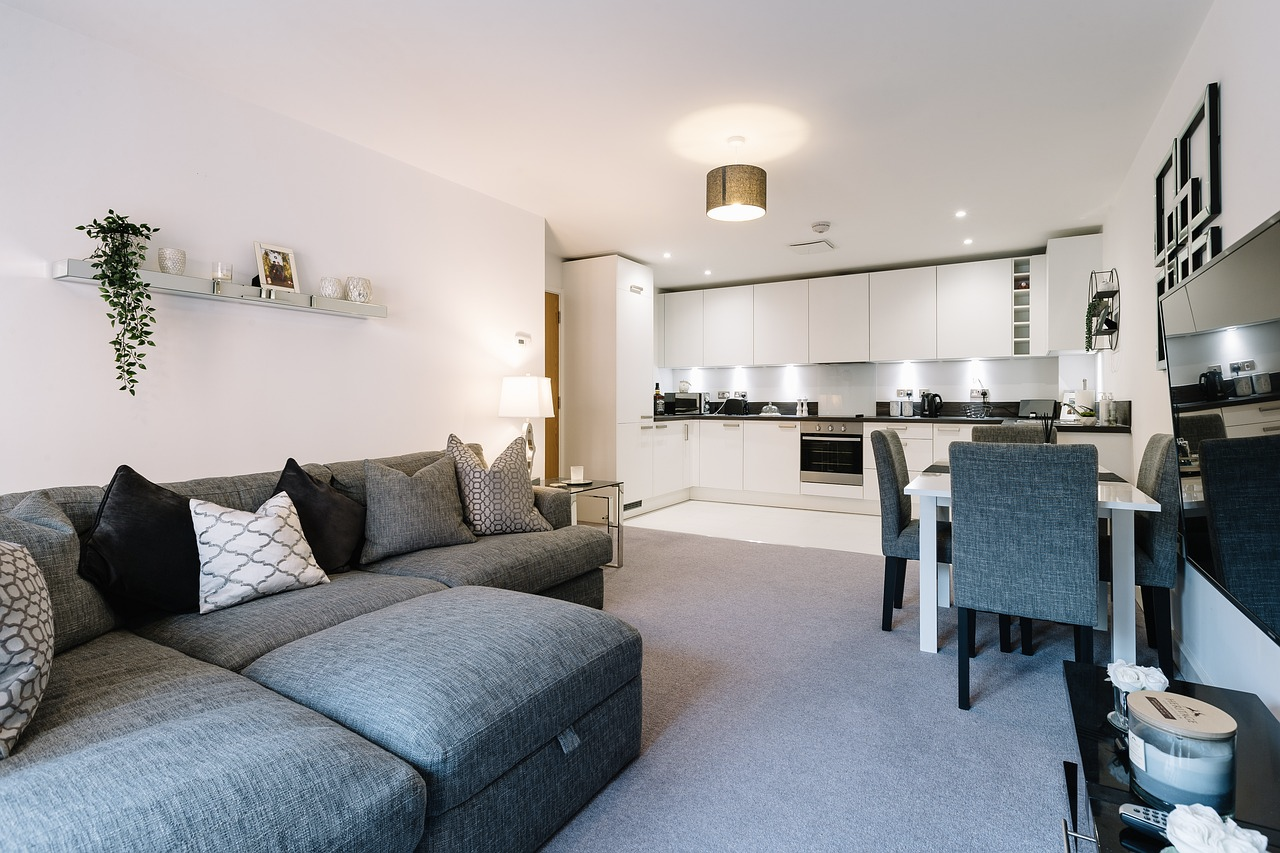“Minimalism is not the lack of something. It’s the perfect amount of something.” – Abhinav Singla
Clean lines, simplicity, and “less is more” are some terms that pop up when you think about minimalism. Minimalist interiors have a calm and simple beauty, but making your space look like this takes more than just picking a few furniture pieces for a white background. If you do it wrong, your space might end up feeling cold and empty. Check out our guide below to understand what minimalism is and how you can create focused interiors for yourself.
Minimalism to us means keeping a space simple, tidy, and highlighting its attractive architectural features. We mostly use a monochromatic palette with color as an accent. We believe minimalism and functionality work together. In a minimalist space, there’s usually an open floor plan, plenty of light, and simple, well-made furniture that’s comfortable. Together, these elements create a calm and welcoming space with a timeless look.
Form, Focus & Functionality
In minimalism, something other than the space takes the spotlight. It could be the people in the room or the view from the window, rather than the room’s decor. Everything should serve a purpose and add value to the space. You still need all the items in a space for it to work, but in minimalist decor, ‘form’ is crucial. For instance, in a dining room, you need a table and chairs. These pieces should complement each other in terms of line, color, and mass. They should harmonize in their basic shape.
In a minimalist condominium living room, every piece of furniture should serve a purpose. There should be chairs for comfortable seating, tables for holding drinks, discreet window treatments to enjoy the views from the high-story residence, and a fireplace for warmth. Even the art should have a simple composition.
Minimalist Architecture
Minimalist architecture shares the goal of simplifying content and refining form and structure, but it has its own intricate language. It focuses on using minimalist design elements, without any ornamentation or decoration. Advocates of minimalism argue that stripping a design down to its essential elements reveals the true “essence of architecture.”
Illustrating aesthetic restraint is a crucial concept in achieving formal simplicity and architectural minimalism when renovating a home built on the principles of ergonomics, functionality, and sustainability. Working within a space with existing elements that cannot be changed, like the plumbing chase, it’s vital to focus on reducing bulkiness. Keeping the design simple and finding unique solutions are essential for this alteration.
Light, Form & Materials
In line with minimalist principles, the concept of “essential” is crucial. Minimalism in design means simplifying the elements of a structure to their core components. No embellishments are added for show. The beauty of minimalist design lies in the purity of its forms and the quality of its materials. The design should be straightforward and uncomplicated, yet still captivating. This is where the use of light, form, and exquisite materials becomes vital. The craftsmanship of the construction is paramount since there’s no trim to hide any imperfections.
It’s also crucial to prioritize storage for a peaceful and serene space, which is essential for maintaining a minimalist living environment while addressing practical storage needs for the average homeowner or family.
Benefits of Having a Minimalist Space for Homeowners
The concept of a clutter-free and tidy space is a driving force behind the minimalist movement, inspiring people to embrace its principles in interior design. When we pause to consider, we realize we don’t need as many things as we think; we can live with much less.
How many sofas or chairs do we truly need? Do we need to adorn every wall with pictures, or perhaps just one? Or none at all? How many knick-knacks are necessary on our coffee table or shelves? What we truly need is functionality and practicality without unnecessary decorations. Shapes should be simple, and colors and textures should blend harmoniously.
The primary benefits we’ve seen in applying a minimalist design aesthetic in projects are rooted in the idea that people want their spaces to highlight essentials and items of personal significance. Living in a well-designed and clutter-free environment has a soothing effect. Ensuring ample closed storage allows the architecture and interiors to remain uncluttered, creating a tranquil haven for living.
Different Design Movements have Adapted Minimalism
Although minimalism originated from the modern movement, its meaning has evolved as it has been embraced by various interior design movements. While minimalism is commonly linked with a modern and contemporary aesthetic, we believe it can also be incorporated into spaces with classic and traditional designs. The essential factor is for the space to exude cleanliness and orderliness, avoiding clutter from excessive furnishings, accessories, and mismatched colors.
The modern movement ushered in a fresh approach to living, emphasizing open floor plans and sleek designs devoid of unnecessary ornamentation. We believe that for architects and individuals alike, there lies an opportunity to embrace complexity and understand that the essence of design is simplifying intricate concepts. The essence of anyone’s work shouldn’t stem from a predetermined architectural style, but rather from the aim to create clean, intelligent, and functional spaces that serve as a backdrop to their intended functions.



